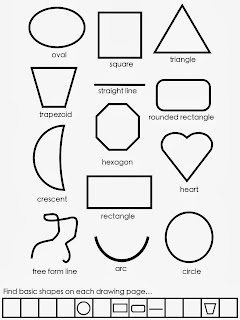Paper tearing is a wonderful thing... and when the torn pieces are glued onto a collage they become an art project. Making a project keeps the activity intentional, not random, and shows your beginner that she is learning a useful skill.
In this activity we practiced fine motor skills by tearing and pasting, plus planning skills by deciding where to put the pieces and what size each piece should be.
We also identified colors by choosing and naming the color to tear next... "Which color do you want to tear next?" and sizes, "Can you make that piece smaller, it's too big."
Construction paper is just right for tearing, but you can experiment with other paper. We began with pieces of brown paper bags, pre-cut to a manageable size. Used wrapping paper is good, next birthday save the paper, cut it into approx. 6"x 6" pieces and make a birthday collage! or after any holiday... as always, when you gather materials, consider the result.
Beautiful materials make beautiful art.


At this point you want your beginner to learn the feeling of her arms moving in opposite directions. First demonstrate the movement by tearing. Then gently move her arms while she holds the paper, so she can feel her arms moving in opposite directions. This movement may take some practice and is vital to paper tearing success. Most children try to pull the paper apart horizontally which rarely works.
You can help by making a tiny tear in the paper,
but be discreet, so she doesn't think it's necessary every time.
Then there is the glue stick... a great invention and worth every penny because it is easy to use, nothing is wasted and the result is neat.
My beginner practiced opening and closing the glue stick for a while.
Everything new is interesting and worth a thorough investigation.
Teach her to put the glue where she wants the paper to go OR on the torn piece.
This simple paper collage combined new two skills and produced an attractive and satisfying result that the beginner was very proud of.
For her, it was a real achievement and
she couldn't wait to show her mom and dad when they came home!
We'll be saving birthday wrapping paper...








































